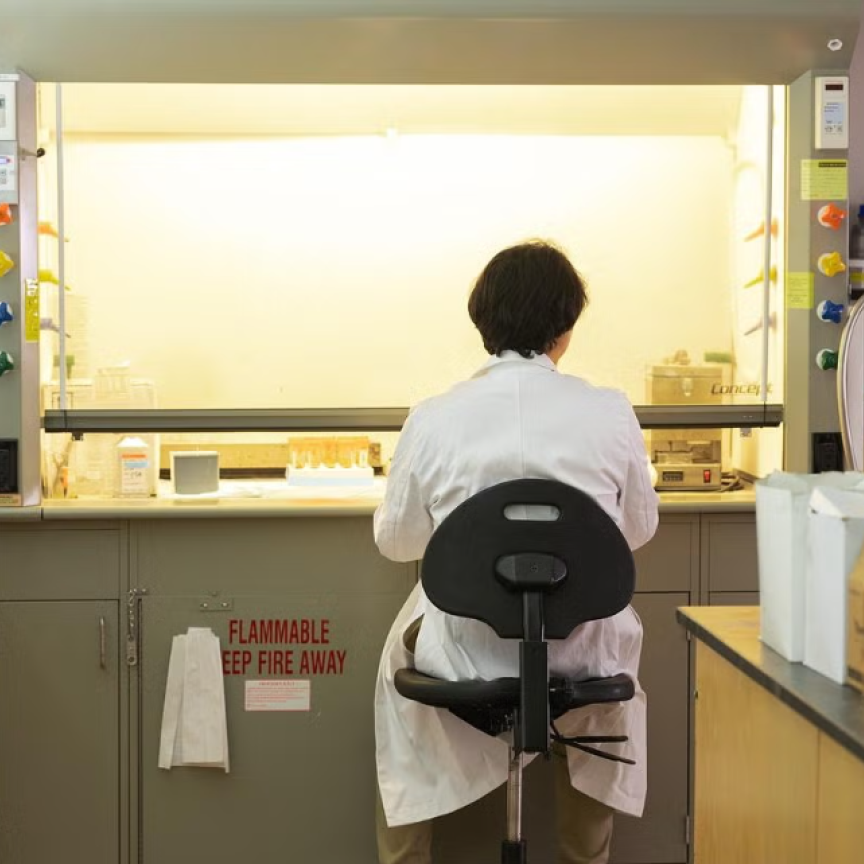Solar cells do not have to be heavy, rigid systems on roof tops. They can now be light-weight and flexible and integrated into anything from car roofs to handbags. And they don’t even need to be outside – many technologies also work by harvesting indoor light.
But the challenges of making flexible cells are enormous and the resultant cells often have very low efficiencies when compared with conventional silicon cells. So why go to the trouble of making flexible solar cells when rigid ones are easier to make and more efficient?
There are two main reasons: weight and design freedom. There are many (potentially lucrative) applications that are not open to traditional silicon solar cells, because of their bulk. For example, large factory roofs make ideal surfaces for solar cell installations, but are simply not designed to take the weight of conventional cells, so lightweight flexible cells are ideal for this application. At the other end of the spectrum, small flexible solar cells are also ideal for integration into consumer products where their flexibility, thinness and robustness give product developers enormous design freedom.
These two markets – power generation and consumer applications – are very different and require cells with different specifications. In the power generation market, high efficiency and long lifetimes are essential, whereas in the consumer market, low-cost and design freedom are important.
These varied market forces have led to the development of a plethora of technologies for making flexible solar cells. Each technology has its strengths and weaknesses and each technology is ideal for particular applications.
There are, broadly-speaking, two types of flexible cells – thin-film semiconductor or organic. The thin-film semiconductor cells, which are based on copper indium gallium selenide (CIGS) or amorphous silicon (a-Si), lead the way in terms of efficiency. Whereas the organic cells (polymer, dye-sensitised or small-molecule) are generally cheaper to produce and have different performance characteristics when compared with CIGS or a-Si cells.
‘Until now a solar cell module technology did not exist that is both highly efficient and lightweight,’ says Tim Harris, chief executive officer of SoloPower, a US company that is commercialising CIGS-based cells and modules. In October last year SoloPower became the first company to obtain certification to both IEC (61646 and 61730) standards and UL 1703 standards for flexible, thin film CIGS modules. This enabled it to sell its products in Europe, in addition to North America. ‘Our modules have an efficiency of approximately 10 per cent and a lifetime of up to 25 years, making them ideal for commercial rooftop applications,’ says Harris.
SoloPower uses a roll-to-roll electroplating process to make its cells, which it claims is a low-cost process. ‘High materials utilisation and low-cost equipment, coupled with high efficiency cells with extremely thin active layers, gives our technology a substantial competitive advantage over alternative materials and techniques,’ says Harris.
A critical challenge, says Harris, has been the development of a repeatable, low-cost manufacturing process.
But CIGS cell manufacturers face another challenge that is largely out of their control. Indium prices have increased dramatically in recent years and there are question marks about its future availability. Reserves are difficult to estimate, because indium is not mined in its own right – it is a by-product of zinc mining. However, China has recently started reporting about its reserves and indium is increasingly reclaimed from deposition process of indium tin oxide (ITO) in LCD manufacturing. So the consensus is that availability of indium is not a constraint to future development and deployment of CIGS. But in a highly-priced competitive industry, such as the solar cell industry, indium prices may be fundamental to the cost-effectiveness and deployment of CIGS.
Harris is not worried. ‘We use our materials so efficiently that rising indium prices will not unduly affect the prices of our modules,’ he says.
Prices of rare-earth compounds, such as indium, are not a concern for manufacturers of organic solar cells.
‘We have no resource limitations,’ says Jens Hauch, director of R&D at Konarka. ‘Our cells are also lighter and more flexible than CIGS technology, and their performance increases in higher temperatures, whereas CIGS has a negative temperature coefficient.’
Konarka’s cells are bulk heterojunction cells made using a donor polymer (p-type semiconductor) and a functionalised fullerene as an acceptor (n-type). These two components are dissolved together in a solution, which can then be printed onto a substrate. Unlike CIGS, whose performance decreases with increasing temperature, transport of charges between molecules in Konarka’s cell improves with increasing temperature, leading to improved cell performance. ‘In real-world conditions, where temperatures are often in excess of 240C, CIGS cells can generate up to 25 per cent less energy than you would anticipate from a standard lab measurement,’ says Hauch.
He believes that this, together with his technology’s ability to collect light at different angles and different times of day, goes a long way to make up for the lower efficiency of Konarka’s cells. The company is currently selling modules with an efficiency of three per cent compared with 10 per cent for CIGS modules. However, efficiencies of more than eight per cent have been achieved in the lab, and Hauch believes it is possible to achieve a module efficiency of at least five per cent in the near term, with more than 10 per cent possible in the future.
‘Our technology has very good low light performance and, while this does not bring us up to the same level as CIGS, it does close the gap considerably,’ says Hauch.
This characteristic is shared by other organic technologies. For example, dye-sensitised solar cells (DSSCs) also perform well in low light levels, making them ideal for indoor applications. UK company G24 Innovations (G24i) is developing DSSC technology and has changed its business plan to focus entirely on indoor products. ‘Independent research has shown that the indoor performance of our technology is significantly better than all our competition,’ says Steve Burt, CFO of G24i. ‘Our cells can be used to replace disposable batteries and also power devices on standby mode. While our technology cannot power a television, it can power a device in standby mode using energy harvested from indoor lighting during the day. In the US, 10 per cent of domestic power usage is for standby mode, which means our technology could be used to make a considerable saving.’
G24i recently signed a development agreement with Texas Instruments to develop a platform for autonomous self-powering devices, such as keyboards and intelligent sensors for industrial and home automation applications.
The company claims its modules have an efficiency of up to 15 per cent when working indoors and harvesting from fluorescent lighting. As with all organic technologies, lifetimes of the modules are relatively short, but as Mark Spratt, senior development manager, points out: ‘The applications we are aiming at do not need a 20-year lifetime. We will match the lifetime that is required for each application.’
One crucial factor for improving lifetimes of organic cells is the materials used to encapsulate the cells. ‘Better barrier layers are now coming onto the market,’ says Spratt. ‘Huge progress has been made in recent years and I believe these materials will help us significantly improve the performance of our cells.’
These improvements in barrier layer could enable the company to move into the outdoor market, but for now it is concentrating on the indoor market, where it thinks it has the biggest advantage.
Like G24i, German company Heliatek will also be aiming its first products at consumer applications. However, its ultimate aim is to develop outdoor modules, which it believes is achievable with improvements to materials used for encapsulation. ‘We are currently building a small-scale production line in Dresden and plan to first develop small products that require shorter lifetimes,’ explains Andreas Rückemann, CEO of Heliatek. ‘We plan to learn from the market and, when we have achieved the lifetimes required, we hope to develop products for power generation on a larger scale.’
Of all the organic technologies, Heliatek has reported the highest efficiencies and expects its first modules to have a five to six per cent efficiency once production is up and running.
Unlike G24i and Konarka, Heliatek uses production techniques that are more similar to the semiconductor industry than the printing industry. The company uses vacuum deposition of small molecules to make its cells and claims the technique is suitable for scale-up and roll-to-roll manufacture.
So with Heliatek, SoloPower, G24i and Konarka all ramping up production in the next year, it seems flexible solar cell technology will finally be coming to the market. With the amount of money, time and effort being invested in developing flexible solar cells, it is clear that flexibility is not just a gimmick. It enables solar cells to be used in ways that were inconceivable a few years ago.


